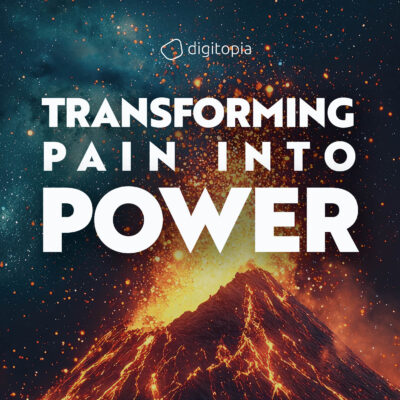
Overcoming Corporate Myopia and Executive Isolation
In the relentless pursuit of quarterly targets and immediate gains, many organizations fall victim to corporate myopia—a short-sighted focus that prioritizes short-term results over long-term vision. This tunnel vision can be detrimental, not only to the organization’s future but also to the well-being of its leaders. Executives, tasked with driving strategic growth, often find themselves isolated, struggling to balance the pressures of delivering quick wins with the need to ensure sustainable success. However, recognizing and addressing corporate myopia is crucial for fostering a healthier business environment where both the company and its leaders can thrive.
Understanding Corporate Myopia
Corporate myopia refers to an organization’s tendency to focus excessively on short-term outcomes, often at the expense of long-term strategy. This short-sightedness can manifest in various ways, such as prioritizing immediate revenue growth over investment in innovation, cutting costs in areas that are critical for future success, or making decisions based on quarterly financial reports rather than a broader strategic plan.
The root of corporate myopia often lies in the pressure to satisfy shareholders, meet market expectations, and deliver quick returns. In this environment, long-term planning is frequently sidelined, and the organization becomes reactive rather than proactive. The consequences of this approach are significant—while short-term targets may be met, the company’s ability to adapt to future challenges and seize new opportunities is compromised.
Case: The Short-Sighted Tech Firm
Consider “FastTrack Solutions,” a technology company that has enjoyed rapid growth in recent years. To keep up with market demands and meet investor expectations, FastTrack has focused heavily on launching new products quickly, often at the expense of thorough research and development. The company’s leadership team is laser-focused on hitting quarterly sales targets, and decisions are made with an eye on immediate returns rather than long-term sustainability.
While this approach has led to impressive short-term results, cracks are beginning to show. FastTrack’s products are increasingly seen as incremental updates rather than true innovations, and the company is starting to lose its competitive edge. Meanwhile, internal processes are strained, as resources are constantly diverted to meet the next deadline, leaving little room for strategic planning or future-proofing.
This is corporate myopia in action—a company so focused on the here and now that it risks losing sight of what’s needed to sustain its success in the long run.
The Executive’s Isolation
For executives, corporate myopia creates a particularly challenging environment. The pressure to deliver immediate results often isolates them from their true role as strategic leaders. Instead of focusing on long-term vision and innovation, they are forced into a cycle of constant firefighting, making decisions based on short-term gains rather than broader strategic objectives.
This isolation can lead to a sense of disconnection from the company’s mission and values. Executives may find themselves increasingly removed from the creative and strategic aspects of their roles, instead becoming ensnared in the day-to-day grind of meeting short-term goals. Over time, this can erode their sense of purpose and fulfillment, leading to burnout and a feeling of being trapped in a role that no longer aligns with their aspirations.
Case: The Isolated Visionary
Take the case of Mark, the Chief Strategy Officer of FastTrack Solutions. Mark is a visionary leader with a deep understanding of the technology landscape and a clear vision for where the company should be headed in the next five to ten years. However, he finds himself increasingly sidelined as the company’s leadership focuses on short-term product launches and quarterly earnings reports.
Despite his best efforts to steer the company toward long-term goals—such as investing in cutting-edge research or exploring new markets—Mark’s initiatives are consistently put on the back burner. The relentless focus on immediate gains leaves little room for the kind of strategic thinking that Mark excels at. As a result, he feels isolated, frustrated, and increasingly disconnected from the company he once felt passionate about leading.
Breaking the Cycle: The Power of Like-Minded Allies
The key to overcoming corporate myopia and alleviating executive isolation lies in building a coalition of like-minded allies within the organization. Recognizing that short-term pressures are a reality, it’s essential for executives to find and cultivate relationships with others who share a long-term perspective. This coalition can include peers, key stakeholders, and even forward-thinking board members who understand the importance of balancing immediate demands with future goals.
One effective strategy is to create cross-functional teams focused on long-term strategic initiatives. These teams can work on projects that may not yield immediate returns but are critical for the company’s future success. By involving diverse perspectives from across the organization, these teams can help build a broader understanding of the importance of long-term planning and create buy-in for these initiatives.
Case: The Turnaround at FastTrack Solutions
Returning to FastTrack Solutions, let’s imagine a different scenario. Recognizing the dangers of corporate myopia, Mark decides to take action. He reaches out to other senior leaders in the company who share his concerns about the overemphasis on short-term gains. Together, they form a strategic task force dedicated to exploring new markets and technologies that will position FastTrack for future success.
Mark also engages with the company’s board, presenting a compelling case for why the current approach, while profitable in the short term, could jeopardize FastTrack’s long-term sustainability. By building this coalition of like-minded allies, Mark is able to gradually shift the company’s focus back to strategic planning and innovation. Over time, FastTrack begins to invest more in research and development, exploring new opportunities that promise to keep the company competitive for years to come.
Moving Forward with Vision
Overcoming corporate myopia requires a delicate balance between meeting immediate needs and investing in the future. For executives, this means not only resisting the pull of short-term pressures but also finding ways to bring others along on the journey. By building coalitions of like-minded allies and championing long-term initiatives, executives can break free from isolation and reassert their role as strategic leaders.
It’s important to remember that both you and your business deserve more than just short-term success. The isolation you feel is a sign that a shift is needed—a shift toward a more balanced approach that values both immediate results and long-term vision. By taking proactive steps to address corporate myopia, you can transform your frustration into a driving force for positive change, ensuring that your business is not only successful today but also well-positioned for the future.
Download Your Copy Today!
For more insights on overcoming challenges like corporate myopia and driving meaningful change, explore the Transforming Pain into Power Ebook. This chapter is just one part of a comprehensive guide that delves into the most pressing issues facing business leaders today, offering actionable strategies to turn obstacles into opportunities for growth and success. Discover the full range of chapters and empower yourself with the tools to transform frustration into fuel for progress.
Get your copy of the Transforming Pain into Power Ebook now and start your journey toward a more dynamic future!


